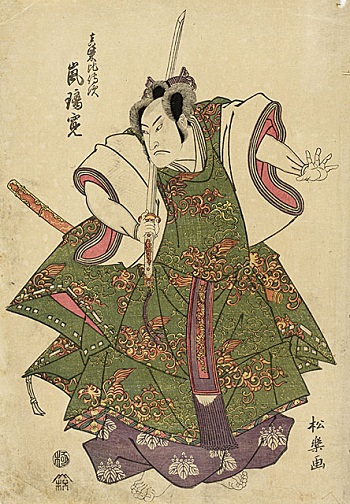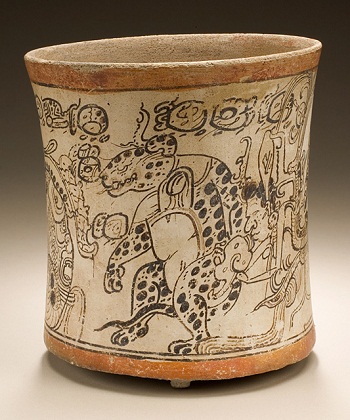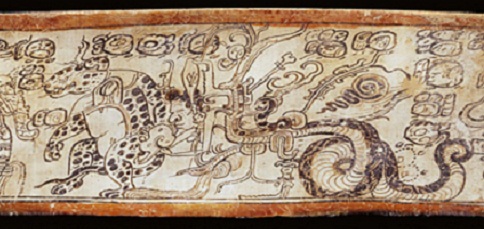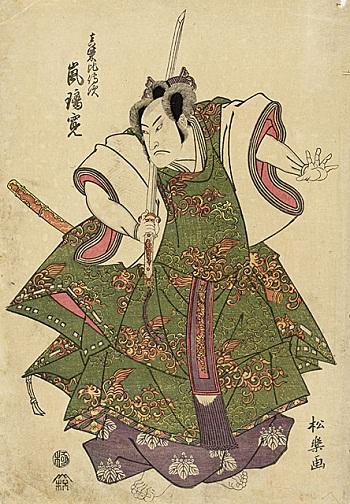I am fortunate to work directly below the galleries in the Art of the Americas Building at LACMA. In rare instances of downtime (or even when I just need a little break), I climb the stairs to the fourth floor, home of our permanent collection of Latin American art. These galleries never get old to me because they contain an astonishing range of art in terms of both time and space. From ancient Peruvian featherwork textiles to contemporary Venezuelan political paintings, the art in these galleries is a diverse representation of many Latin American cultures, and it’s nearly impossible to absorb it all in just one visit.
Recently, I came upon a group of Mexican and Guatemalan codex-style ceramics that feature detailed mythological tales. These ceramics were made by the Maya, dating around 650–800, and they initially baffled me. At first glance, the style used looked similar to early nineteenth-century Japanese woodblock prints. Being half Japanese, I constantly sought these prints out as a young child. You may be familiar with them as well—they are sort of comical and often feature grimacing samurai warriors, sometimes with their eyes crossed, who are posed in a sort of stern three-quarter profile.

Arashi Rikan II in a Samurai Role, circa 1819, gift of George T. and Margaret W. Romani
Though this was my initial impulse, I soon realized the art here was more like something else. Upon closer inspection, I decided that the illustrations on these ceramic vessels were whimsical, cartoonish even, and seemed to be almost animated. One piece in particular, Drinking Vessel Depicting Otherworldly Toad, Jaguar, and Serpent, was particularly captivating in that the animals appeared to be involved in a march or ceremony of some kind. I learned from the didactic label that the animals were often avatars of human rulers, each representing different realms of the natural world, and the scenes often depicted Maya royal ritual performances.

Drinking Vessel Depicting Otherworldly Toad, Jaguar, and Serpent, Mexico, Maya, 650–800, gift of the 2006 Collectors Committee
Here, the plump toad represents the watery underworld, wearing a headdress and making a generous offering of a bone, an eyeball, and a human hand. The jaguar, symbolizing the earthly plain, is hunched on one cocked leg—a loaded spring ready to release. I had to blink once or twice to make sure they weren’t actually moving. It doesn’t take much to imagine the icy smooth body of the serpent (the celestial sphere’s delegate) coiling and uncoiling, advancing along in this strange parade. I also learned that the apparent movement of the scenes can be attributed to the use of the whiplash painting technique—a method by which artists thicken and thin lines to alternately imbue them with and siphon off energy and motion. With this knowledge, I paid more attention to those lines, and I was mesmerized by the illusion of locomotion. The vessel is displayed among others in a clear case in the middle of the gallery, so you can literally view it from all angles. As you walk around the vessel, the vessel moves the story.

Drinking Vessel Depicting Otherworldly Toad, Jaguar, and Serpent (detail), Mexico, Maya, 650–800, gift of the 2006 Collectors Committee
While this particular piece is a strong example of this type of codex-style ceramics, it certainly isn’t the only one on view. I observed many more that were equally as detailed and equally as enthralling. Next week and the week after and the week after that, I’m sure I will discover even more inconspicuous treasures in the Latin American galleries.
Jenny Miyasaki



